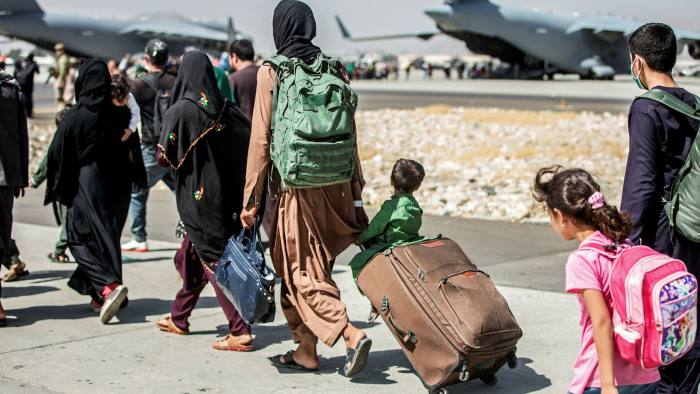Turbulence in Afghanistan
September 16, 2021
Since the September 11, 2001 attacks on the Twin Towers, the U.S. government had been trying to dismantle terrorist groups in Afghanistan in hopes of replacing them with a stable government. During his term, former President Donald Trump negotiated a deal with the Taliban, the ruling terrorist group at the time, stating the United States would pull all their troops out of the country by May 1, 2021: a deal put in place because they had made minimal long term progress in government reformation. When President Joe Biden took office, he decided to abide by the agreement but extend the date to August 2021. Only two weeks after the withdrawal of American troops, the Taliban had completely overrun the government, regaining control over Afghanistan and her people.
Through four presidents, two decades, the expense of countless American lives, and a total of $5.8 trillion since the day of the attacks in 2001 (Brown University), the U.S. struggled to affect change and build stability. Once the Taliban assumed control, the U.S. government scrambled to gather American citizens and officials remaining in the country. Airports across the nation have been swarmed with tens of thousands of desperate Afghani people rushing to immigrate outside of the now terrorist-ridden country.
While in the nation, United States officials were able to instate and enforce more equality for women, improve healthcare, and expand education. However, with the Taliban in control again, people are suffering. The Islamist religious-political movement and military organization, based on the trend of their previous actions, plans on installing stringent guidelines in various realms. The future of Afghani women’s freedom hangs in the balance: Suhail Shaheen, a Taliban spokesman, says the group will respect the rights of women and minorities “as per Afghan norms and Islamic values.” From hiding their physical bodies to suppressing their access to education, the Taliban likely aims to cast women back into the past, a past so repressive it forbid them from walking down a street or into a store without a male relative escorting them and forbid them from wearing high heeled shoes as the sound of their footsteps would “excite” men. Their past quelled the sound of a woman’s voice in public, shielded them from being seen on home balconies, and constricted them from film, photograph, and radio presence. Homes, schools, mosques, and hospitals have been destroyed to the point that half a million people are living in road-side tents and thousands are dead.
In order to prevent further damage and support Afghans – as well as refugees – stuck in Afghanistan, it is necessary to educate oneself on this event and how to help. If you would like to lend a hand to the cause, stay updated, share knowledge with friends and family, and look at the links below:
Donate to families in Afghanistan through the International Rescue Committee (IRC)
Donate to the International Refugee Assistance Project (IRAP) to grow their network of advocates who will “continue defending the legal and human rights of refugees and displaced people around the world”
Subscribe to the IRAP to remain connected
Sign a petition urging President Joe Biden to remain loyal to Afghan allies
Other organizations to donate to that are providing direct humanitarian aid in Afghanistan:
- GlobalGiving
- Enabled Children Initiative
- Islamic Relief USA
- Women for Women International
- Lutheran Immigration and Refugee Service


